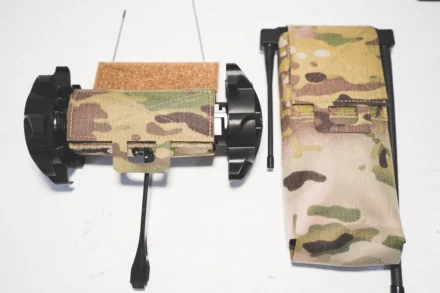WASHINGTON — The U.S. Army selected the Sierra Nevada Corporation as the lead system integrator for its High Accuracy Detection and Exploitation System today. The initial award on the 12-year indefinite-delivery, indefinite-quantity contract is $93.5 million, with an overall ceiling of $991.3 million. HADES will provide transformational increases in speed, range, payload and endurance for Army aerial intelligence, surveillance and reconnaissance capabilities.
“This is a great day for the continuing effort to modernize the Army’s aerial intelligence, surveillance and reconnaissance collection strategy,” said Mr. Doug Bush, Assistant Secretary of the Army for Acquisition, Logistics and Technology. “The thoughtful and disciplined execution of the HADES program strategy will deliver the transformational capabilities we need for the Army’s next-generation aerial ISR aircraft.”
“HADES is the centerpiece of the Army’s long-promised aerial ISR transformation strategy,” said Lt. Gen. Anthony Hale, Deputy Chief of Staff, G-2. “HADES allows the Army to fly higher, faster and farther, which directly impacts our ability to see and sense deeper, delivering an organic capability in line with the Secretary of the Army’s number-one operational imperative – deep sensing.”
With higher airspeeds and longer endurance, HADES will facilitate aerial ISR coverage for a much larger geographical area and will facilitate global deployment within days instead of the current transitional period of several weeks. This will adversely affect adversaries’ ability to plan and maneuver.
The Army began shaping the HADES program in 2020 to replace the legacy turboprop aircraft fleet currently comprised of the Guardrail, Enhanced Medium Altitude Reconnaissance and Surveillance System, and Airborne Reconnaissance Low aircraft, which have been in service for more than four decades. HADES prototypes will be the first Army-owned large-cabin business jets utilized for aerial ISR platforms.
“I am very proud of the entire HADES team, along with our intelligence, aviation and contracting enterprise partners, who have worked diligently to ensure that the Army delivers a new aerial ISR collection capability that meets the Army’s 2030 operational imperatives,” said Brig. Gen. David Phillips, Program Executive Officer, PEO Aviation. “HADES will allow our formations to see and sense farther and more persistently, providing an asymmetric advantage over our adversaries in large-scale operations and multidomain operations.”
As the Army transforms to meet an uncertain future, HADES is one of the many modernization capabilities that will help ensure that the Army of 2030 is ready and able to fight and win when the nation calls.
Both comments and pings are currently closed.
Read the full article here








Leave a Reply